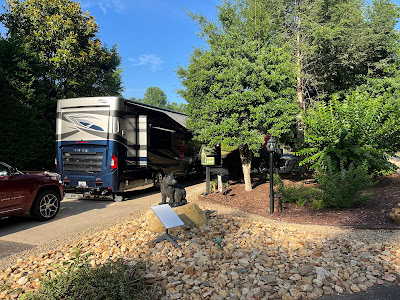Several weeks ago I had my annual mammogram and shortly after received a form letter that read something like this:
Dear Cynthia, the radiologist has reviewed the films from your recent mammogram. Please do not be alarmed but further studies of your right breast are required. Please call to make an appointment....yada, yada, yada. Actually it's kinda interesting that I got a similar letter following the previous mammogram about the left breast! I guess that is why all of this seemed rather routine.
I thought about the joke that had circulated on email a while back, and considered whether any of these measures would help me prepare for the upcoming tests:
Many women are afraid of their first mammogram, but there is no need to worry. By taking a few minutes each day for a week preceding the exam and doing the following practice exercises, you will be totally prepared for the test. And, best of all, you can do these simple practice exercises right in your home.
EXERCISE #1
Open your refrigerator door and insert one breast between the door and the main box. Have one of your strongest friends slam the door shut as hard as possible and lean on the door for good measure. Hold that position for five seconds. Repeat again in case the first time wasn’t effective enough.
EXERCISE #2
Visit your garage at 3 a.m. when the temperature of the cement floor is just perfect. Take off all your clothes and lie comfortably on the floor with one breast wedged under the rear tire of the car. Ask a friend to slowly back the car up until your breast is sufficiently flattened and chilled. Turn over and repeat for the other breast.
EXERCISE #3
Freeze two metal bookends overnight. Strip to the waist. Invite a stranger into the room. Press the bookends against one of your breasts. Smash the bookends together as hard as you can. Set an appointment with the stranger to meet next year and do it again!!
CONGRATULATIONS! Now you are properly prepared for your mammogram.
So the kind, caring, and considerate technician takes two additional pictures. My thoughts during this process were:
1) Just where does she think I'm going to go when she asks me to 'hold still'? Uh, lady, my slightly sweaty right breast is flattened and wedged between two plastic 'paddles'. It is stuck fast and will probably have to be peeled off the plastic plate as it is. I mean, if you look at it the right way, it does kinda resemble dough that has been rolled out....it could stick like that too - oops, not enough flour on the counter! Anyway, I think that if I were to faint, and uh, if you don't hurry, I just might, my breast would still be held immovable with me dangling below.
2) Hold my breath? You gotta be kidding? With my arm draped over the machine this way and my opposite shoulder held back to 'clear the path' for the x-ray and my chin held up at an awkward angle so that the paddle assembly can move and my breast squished to a thickness of a cheap steak, you are delusional if you think I could breathe even if I wanted to!
Then I'm off to the ultrasound department with an equally caring and kind technician. But this time my right breast is assaulted with warm gel. In comparison to the mammogram paddles, this stuff is HOT! At least I can see the ultrasound as they have a nifty large flatscreen monitor on the wall. It's bigger than my TV at home! Seeing my breast tissue enlarged to that degree is rather.....rather....boring. I have no clue what I'm looking at. It looks like ocean waves. I begin to fantasize that I am in a Coast Guard helicopter and that we are looking for little lost sailboats being tossed on the stormy sea. After consulting with the radiologist and several more blobs of gel, it is determined that I need more mammogram shots. They use a black Sharpie marker to identify the spot, because the marker BB that they will tape on often falls off, what with all of the goo. I head into the mammogram room and realize that the goo, most of which was wiped off, some of which was not, has stuck the modesty jacket they provided to my breast....and my side....and on the side of my neck. Yeeuuck! Furthermore, I thought having a mammogram with a sweaty breast was tough. It doesn't come close to the strange feeling of sandwiching a gooey, sticky breast in plastic.
As I am now writing this on my blog, it is obvious that I survived the ordeal. The outcome is that they think the inconsistencies that were noted on both the mammogram and the ultrasound are the result of scar tissue from a previous biopsy. Being the eternal optimist, I trust they are correct in their assessment. I am to carefully conduct self-exams and have another screening in six months. Another outcome of this adventure? Well, since I am in town and there are lots of nifty shops between me and home.....
All joking aside, breast cancer screening is a serious matter. Breast cancer is the leading cause of cancer death in women between the ages of 15 and 54. Statistics suggest that 1 out of every 8 women will acquire breast cancer in her lifetime. So, look around when you are with a group of 7 other friends. Based on these statistics, one of you will get breast cancer. If you are at a party with 15 other women, two of the women in the room will be a victim of breast cancer. Breast cancer often has no outward signs or symptoms that you can see or feel. Please check with your doctor and follow his or her recommendations.


















